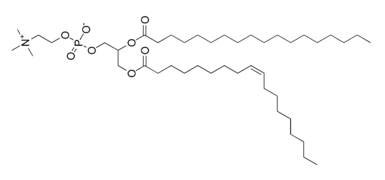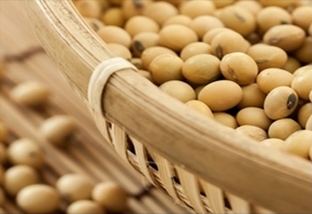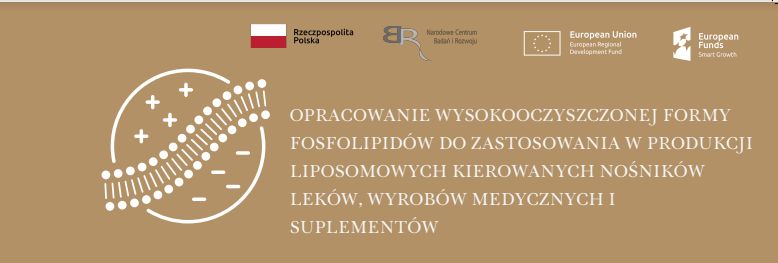Lecithin
Lecithin is any of a group of yellow-brownish fatty substances occurring in animal and plant tissues, and in egg yolk, composed of phosphoric acid, choline, fatty acids, glycerol, glycolipids, triglycerides, and phospholipids (e.g., phosphatidylcholine, phosphatidylethanolamine, and phosphatidylinositol). However, lecithin is sometimes used as a synonym for pure phosphatidylcholine, a phospholipid that is the major component of its phosphatide fraction. It may be isolated either from egg yolk (in Greek lekithos—λεκιθος) or from soy beans, from which it is extracted chemically (using hexane) or mechanically.
It has low solubility in water. In aqueous solution its phospholipids can form either liposomes, bilayer sheets, micelles, or lamellar structures, depending on hydration and temperature. This results in a type of surfactant that is usually classified as amphoteric.
Lecithin is sold as a food supplement and for medical uses.
Lecithin is regarded as a well-tolerated and non-toxic surfactant. It is approved by the United States Food and Drug Administration for human consumption with the status "Generally Recognized As Safe." Lecithin is an integral part of cell membranes, and can be totally metabolized, so it is virtually non-toxic to humans. Other emulsifiers can only be excreted via the kidneys.
Lecithin is used commercially in substances requiring a natural emulsifier and/or lubricant, from pharmaceuticals to protective coverings. For example, lecithin is the emulsifier that keeps cocoa and cocoa butter in a candy bar from separating.
There are studies that show soy-derived lecithin has significant effects on lowering cholesterol and triglyceride, while increasing HDL ("good cholesterol") levels in the blood.
Commercial lecithin, as used by food manufacturers, is a mixture of phospholipids in oil. The lecithin is obtained by degumming the extracted oil of the seeds. The lecithin is a mixture of various phospholipids, and the composition depends on the origin of the lecithin. A major source of lecithin is soybean oil. Because of the EU-requirement to declare additions of allergens in foods, in addition to regulations regarding Genetically Modified Crops, a gradual shift to other sources of lecithin, e.g., sunflower oil, is taking place.
The main phospholipids in lecithin from soya and sunflower are phosphatidyl choline, phosphatidyl inositol, phosphatidyl ethanolamine, and phosphatidic acid. They are often abbreviated to PC, PI, PE, and PA, respectively. To modify the performance of lecithin, i.e., to make it suitable for the product to which it is added, it may be hydrolysed enzymatically. In hydrolysed lecithins, a portion of the phospholipids have one fatty acid removed by phospholipase. Such phospholipids are called lyso-phospholipids. The most commonly-used phospholipase is phospholipase A2, which removes the fatty acid at the sn-2 position.
In margarines, especially those containing high levels of fat (>75%), lecithin is added as an 'anti-spattering' agent for shallow frying. Lecithin is admitted by the EU as a food additive, designated by E number E322.
Lecithins may also be modified by a process called fractionation. During this process, lecithin is mixed with an alcohol, usually ethanol. Some phospholipids have a good solubility in ethanol (e.g., phosphatidylcholine), whereas most other phospholipids do not dissolve well in ethanol. The ethanol is separated from the lecithin sludge, after which the ethanol is removed by evaporation, to obtain a phosphatidylcholine-enriched lecithin fraction.

Welcome to our website where you can find detailed information on our company’s history and on the range of its present activities.
The main activity of our plant is lecithin powder production. In the Products section you can find the list of all the products that are available at our company. We also offer spray-drying. You will find more details in the Services section.







